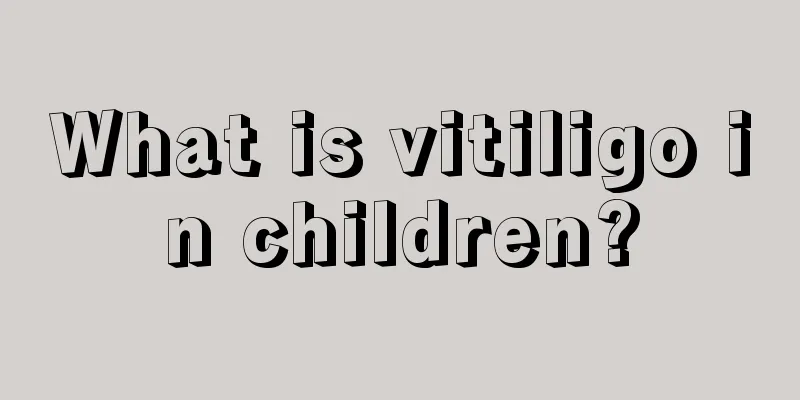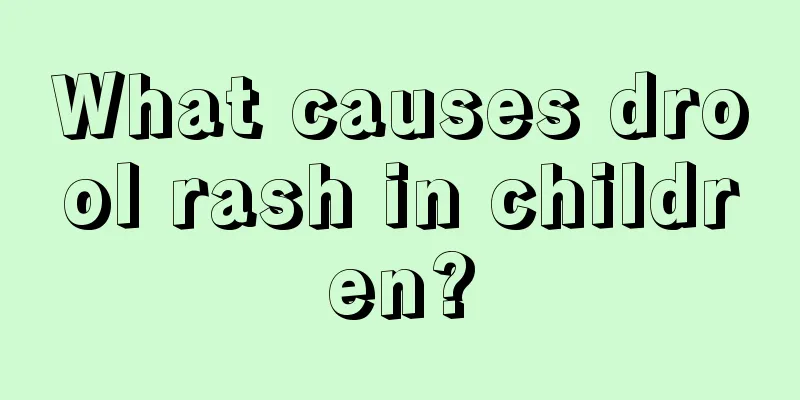What is vitiligo in children?

|
Sometimes people may encounter children suffering from vitiligo in their lives. In China today, the number of children suffering from vitiligo is increasing every year. However, many parents do not know much about this disease, let alone treatment. So let’s take a look at what vitiligo is in children. Vitiligo is a common pigmented skin disease in children. The disease is characterized by local or generalized depigmentation forming white spots. It is an acquired localized or generalized skin depigmentation disorder. It is a common skin disease that affects beauty. It is easy to diagnose but difficult to treat. Traditional Chinese medicine calls it "vitiligo" or "leucoderma". Vitiligo is an acquired condition that causes localized white patches due to loss of skin pigmentation, making the local skin appear white. In medicine, this lesion is usually called depigmentation. This disease occurs all over the world, with the highest incidence in India. About 10,000 people are diagnosed in my country. It can affect all races, and there is no significant difference in the incidence between men and women. The earliest onset of vitiligo is at birth, and those who develop the disease before the age of 10 account for about 15% of the total number of vitiligo patients. There are significantly more female patients than male patients. The positive rate of family history of patients is relatively high, and there is often a history of premature birth in their families, which shows the important role of genetic factors in the onset of vitiligo in children. Some patients develop skin lesions in areas susceptible to trauma such as the knees, elbows, forearms, hands and feet, suggesting that trauma may be a triggering factor for vitiligo in children. The skin lesions of vitiligo in children are located on the head and neck in about 50%, on the lower limbs in about 28%, and on the trunk in about 18%. The first sites discovered are often the external genitalia and perianal area. The initial skin lesions are often located at the knees, elbows, forearms, hands, heels and other areas susceptible to trauma. The above is a brief introduction to children's vitiligo. I believe that after understanding it, everyone will find that in fact, vitiligo in children is very harmful to the development and health of our children. Moreover, the number of children with vitiligo in our country is still on the rise. All sectors of society must pay more attention to caring for children with vitiligo. |
<<: What are some ways to quickly reduce fever in children?
>>: How to treat peeling fingers in children
Recommend
What should I do if my child doesn't want to eat?
We as parents will encounter the situation where ...
Which part of the body should be moxibustioned for children with cough
Children have poor immunity, so they are often in...
What should babies eat if they have bad breath due to internal heat?
It is a very common situation for babies to get a...
What causes white spots on children's teeth?
Some parents find a phenomenon when taking care o...
Can babies eat lobster? Please learn the correct way to eat
Lobster is very nutritious. In addition to common...
What are the treatments for ADHD in children?
Attention Deficit Hyperactivity Disorder (ADHD) i...
What to do if your child's lips are cracked and peeling in summer
The weather is hot in the summer, and people are ...
Some reasons why babies keep hiccuping
My child was always hiccuping when he was one or ...
Baby has fever, shivers, cold hands and feet
We all know that babies are the fruit of love in ...
What should I do if my child’s front teeth are knocked out? These tips can help you
Children are more naughty and like to play, but b...
How to care for baby teeth
The growth of infants' teeth is a problem tha...
What causes sore throat in children?
When children are young, if they often eat snacks...
What to do if your baby doesn't drink water
I recently went home to visit my little niece, an...
Six-month-old baby wakes up frequently at night
During the baby's growth process, there are a...
There is white discharge from the girl's vagina
Many mothers find white secretions from their bab...









